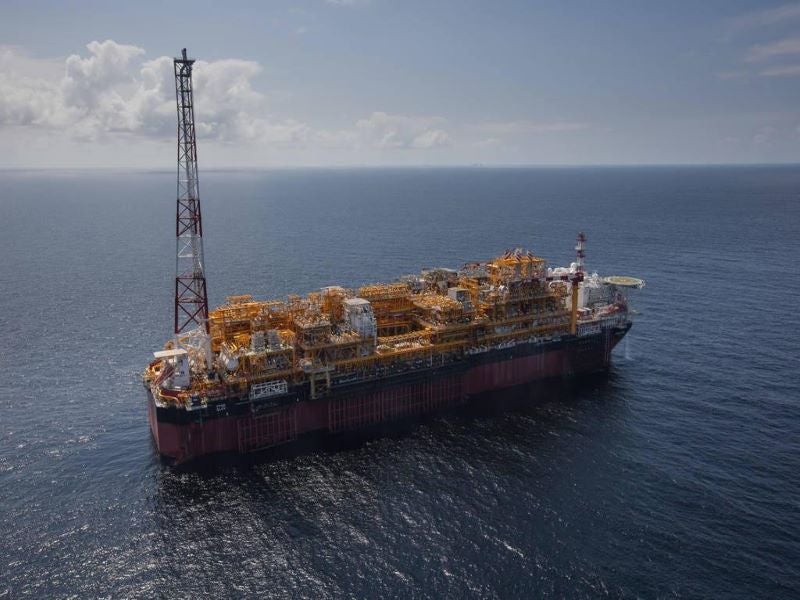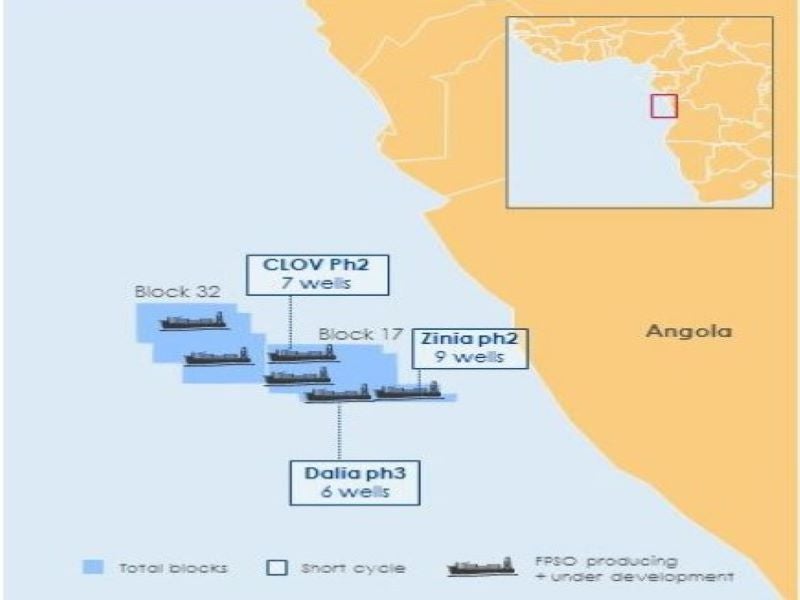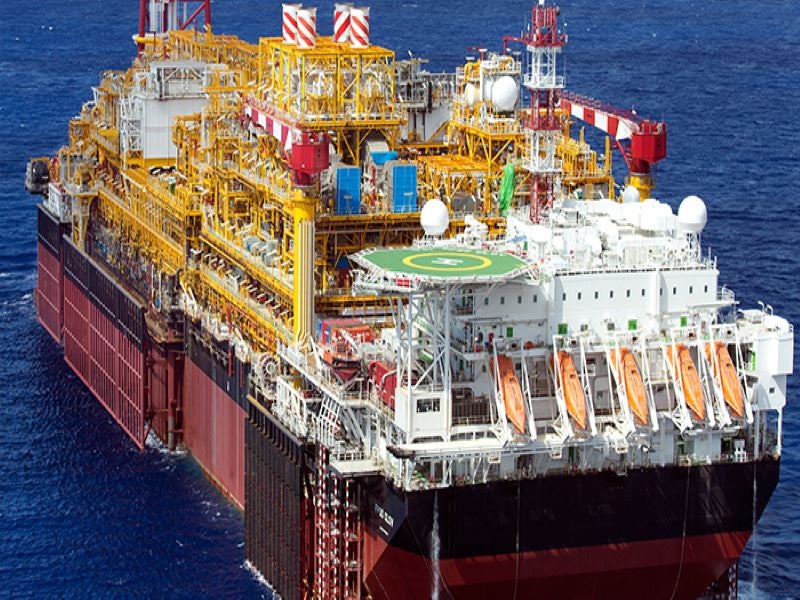The CLOV deepwater oil fields development project is located in Block 17, offshore Angola. Being developed in phases, the project involves the development of Cravo, Lirio, Orquidea, and Violeta fields in the block.
Lirio was discovered in 1998, while Cravo and Orquidea were discovered in 1999 and Violeta in 2001.
TotalEnergies, a French oil and gas company, operates Block 17 with a 38% interest. Other partners in the Block 17 are Equinor (22.16%), ExxonMobil (19%), BP Exploration Angola (15.84%), and Sonangol P&P (5%).
The project commenced production in June 2014. The CLOV Phase Two project, which is the second phase of the CLOV project, was sanctioned in 2018. It involves subsea development and tieback to the existing CLOV floating production, storage, and offloading unit (FPSO). The second phase came online in December 2021 and is expected to hit a production rate of 40,000 barrels of oil equivalent a day in mid-2022.
Location and geology
The CLOV project is located in water depths ranging between 1,100m and 1,400m, approximately 140km offshore Angola. The estimated resources of the CLOV Phase Two project are approximately 55 million barrels of oil equivalent (Mboe).
CLOV is the fourth development project in Block 17. It produces two types of oil from two separate reservoirs of Oligocene and Miocene ages. The reservoirs are spread across 381km². The two oil types have different pressures, temperatures, and viscosities.
CLOV development details
The CLOV Development Phase One consists of 34 subsea wells, including 19 producer wells and 15 water injector wells, a multi-phase pump system, eight production manifolds, and a 211km-long subsea pipeline network. The surface infrastructure includes an FPSO vessel and an offloading terminal.
The Cravo, Lirio, Orquidea, and Violeta oil fields are divided into two production hubs, namely Cravo/Lirio and Orquidea/Violeta. The Cravo/Lirio hub produces Oligocene oil, while the other hub produces Oligocene and Miocene oils.
Each production hub comprises four production manifolds. The subsea wells are tied back to the CLOV FPSO. A subsea multi-phase pumping system was adopted to enhance oil recovery as the reservoir pressures decrease.
Phase one reached its design production capacity of 160,000bpd in October 2014.
The CLOV Phase Two project involves the drilling of seven additional wells, installation of subsea infrastructure, and tieback to the CLOV FPSO.
CLOV FPSO details
The 305m-long and 61m-wide all-electric CLOV FPSO has a production capacity of 160,000bpd of crude oil and a gas treatment capacity of 6.5 million m³ a day. It has an oil storage capacity of 1.78 million barrels. Two oil-loading lines were installed to connect the FPSO to the offloading buoy.
The gas produced is either exported to an onshore liquefaction plant or used to support other Block 17 operations, ensuring ‘zero flaring’ under normal operations.
Contractors involved in CLOV development
GE Oil & Gas was awarded a contract worth £71.2m ($113m) to supply gas turbines and compressors for the CLOV development project in October 2010. It supplied four LM2500+ G4 SAC aeroderivative gas turbines for power generation and five compressors for the FPSO platform.
FMC Technologies, now TechnipFMC, was awarded a contract worth £333.35m ($520m) to manufacture and supply subsea production equipment including 36 subsea trees, wellheads, and controls for the project in September 2010. The contractual scope also included the supply of eight manifolds, two workover systems, and associated equipment.
Daewoo Shipbuilding & Marine Engineering (DSME), a shipbuilding company based in South Korea, constructed the FPSO for the CLOV development.
Subsea 7 received a contract for the engineering, procurement, installation, and construction (EPIC) of pipelines, including production, water injection, and export pipelines, for the project in July 2010. It also installed subsea manifolds and pumps, umbilicals, 37 spools, and 15 jumpers.
Aker Solutions was selected to supply a subsea umbilical and associated equipment for the CLOV development in February 2011. It supplied a 10.6km-long multi-phase power and control umbilical (MPP umbilical) for the Framo multi-phase pump station of the CLOV project.
Norco Group, an energy storage equipment maker and service provider based in Scotland, was awarded a three-year maintenance contract for the uninterruptible power supply (UPS) systems and standby battery equipment on the Block 17 assets including the CLOV FPSO in December 2020. The contract includes an optional two-year extension.
A partnership between Ashtead Technology, an integrated subsea technology and services specialist, and Ocean Atlantic Petroleum, a subsea inspection and asset integrity company based in Angola, received an underwater inspection contract for the Pazflor and CLOV fields in March 2021. The contract was awarded upon completion of a multi-asset mooring inspection campaign in the Girassol and Dalia fields.
Block 17 details
Block 17 comprises four FPSOs, namely Girassol, Pazflo, Dalia, and CLOV. Girassol has a crude oil processing capacity of 200,000 barrels per day (bpd), while Pazflo, Dalia, and CLOV have a capacity of 220,000bpd, 240,000bpd and 160,000bpd, respectively.
Girassol, which commenced production in December 2001, was the first development in the block. The other developments Dalia and Pazflor were brought on stream in December 2006 and August 2011, respectively.
The Block 17 development partners signed an agreement with the Agência Nacional de Petróleo, Gás e Biocombustíveis (ANPG) and Sonangol to extend the validity of the production licence for the Block 17 until 2045, in December 2019. The agreement became effective in April 2020. Sonangol acquired a 5% stake in Block 17 as part of the agreement and is expected to buy a further 5% interest in 2036.
The Zinia Phase Two, CLOV Phase Two, and Dalia Phase Three projects, which are brownfield satellite projects in the block, were sanctioned in 2018 to maintain the production in Block 17 above 400,000 barrels of oil per day (bopd) until 2023. The three projects are expected to add 150 million barrels of resources.





